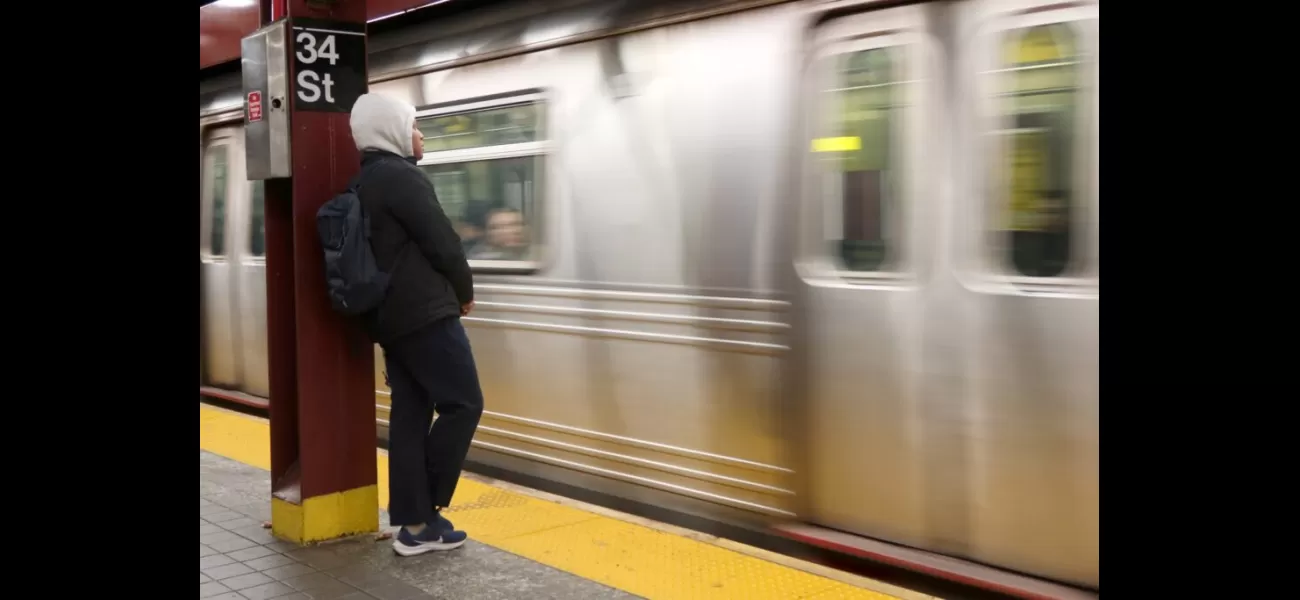Research shows that pollution in New York City subway systems disproportionately affects Black individuals.
Trains trap polluted air, forcing passengers to inhale harmful fumes while traveling.
August 11th 2024.

A recent study has brought to light a concerning issue in New York City's subway system - the air quality is significantly impacting Black and Hispanic riders. The study, conducted by researchers at New York University and reported by Gothamist on August 7th, revealed that these minority groups are facing a disproportionate amount of harm due to the toxic air in the underground transit system.
The researchers found that longer commute times and multiple train transfers are contributing factors to the heightened exposure to polluted air for Black and Hispanic riders. In fact, the data showed that Black riders experience 35% more polluted air, while Hispanic riders are at a 23% higher risk compared to their White and Asian counterparts. This disparity is alarming and requires urgent attention.
The subway trains themselves are responsible for trapping and circulating the polluted air, leaving riders with no choice but to inhale the harmful fumes during their daily commutes. According to the study, the air quality in the transit system is 15 times higher than what is deemed safe by the World Health Organization. This poses a serious threat to the respiratory and cardiovascular health of riders of color.
One of the researchers, Masoud Ghandehari, shed light on the issue by explaining how the underground trains churn up the particles of polluted air, making riders of color more vulnerable to various diseases. "When the train passes through, all the metal in the tunnel is disturbed, causing the concentration of pollutants in the train to rise. And every time the train stops at a station, the concentrations shoot up even more because the outdoor environment, the platforms, are already higher in concentration," he stated.
In response to this alarming discovery, Ghandehari proposed a simple yet effective solution - a thorough cleaning of the subway system. He emphasized that the accumulated dust and pollutants in the tunnels need to be removed as they contribute to the heightened levels of air pollution. "All that dust needs to be cleaned up. It's all settled in the bottom of the tunnel. So when a train pulls into a station, it churns up everything that's underneath, causing the concentrations to shoot up in the air," Ghandehari explained.
However, some individuals are not in agreement with Ghandehari and his research. Tim Minton, the MTA Communications Director for NYC, referred to the data as "debunked." In a statement, he wrote, "This recycled 'study' based on outdated 'data' has already been proven false. Every informed person knows that public transit is the solution to climate change and plays a crucial role in making NYC the greenest city. It also provides equitable transportation for individuals from all communities, allowing them affordable and safe access to jobs, education, and other opportunities."
It is evident that this issue is complex and requires a multifaceted solution. From addressing the underlying causes of air pollution in the subway system to promoting more sustainable modes of transportation, it is crucial to take action to protect the health and well-being of all subway riders, regardless of their race or ethnicity. As we move towards a greener and more inclusive future, it is imperative to address issues of environmental injustice and work towards creating a healthier and more equitable society for all.
The researchers found that longer commute times and multiple train transfers are contributing factors to the heightened exposure to polluted air for Black and Hispanic riders. In fact, the data showed that Black riders experience 35% more polluted air, while Hispanic riders are at a 23% higher risk compared to their White and Asian counterparts. This disparity is alarming and requires urgent attention.
The subway trains themselves are responsible for trapping and circulating the polluted air, leaving riders with no choice but to inhale the harmful fumes during their daily commutes. According to the study, the air quality in the transit system is 15 times higher than what is deemed safe by the World Health Organization. This poses a serious threat to the respiratory and cardiovascular health of riders of color.
One of the researchers, Masoud Ghandehari, shed light on the issue by explaining how the underground trains churn up the particles of polluted air, making riders of color more vulnerable to various diseases. "When the train passes through, all the metal in the tunnel is disturbed, causing the concentration of pollutants in the train to rise. And every time the train stops at a station, the concentrations shoot up even more because the outdoor environment, the platforms, are already higher in concentration," he stated.
In response to this alarming discovery, Ghandehari proposed a simple yet effective solution - a thorough cleaning of the subway system. He emphasized that the accumulated dust and pollutants in the tunnels need to be removed as they contribute to the heightened levels of air pollution. "All that dust needs to be cleaned up. It's all settled in the bottom of the tunnel. So when a train pulls into a station, it churns up everything that's underneath, causing the concentrations to shoot up in the air," Ghandehari explained.
However, some individuals are not in agreement with Ghandehari and his research. Tim Minton, the MTA Communications Director for NYC, referred to the data as "debunked." In a statement, he wrote, "This recycled 'study' based on outdated 'data' has already been proven false. Every informed person knows that public transit is the solution to climate change and plays a crucial role in making NYC the greenest city. It also provides equitable transportation for individuals from all communities, allowing them affordable and safe access to jobs, education, and other opportunities."
It is evident that this issue is complex and requires a multifaceted solution. From addressing the underlying causes of air pollution in the subway system to promoting more sustainable modes of transportation, it is crucial to take action to protect the health and well-being of all subway riders, regardless of their race or ethnicity. As we move towards a greener and more inclusive future, it is imperative to address issues of environmental injustice and work towards creating a healthier and more equitable society for all.
[This article has been trending online recently and has been generated with AI. Your feed is customized.]
[Generative AI is experimental.]
0
0
Submit Comment





